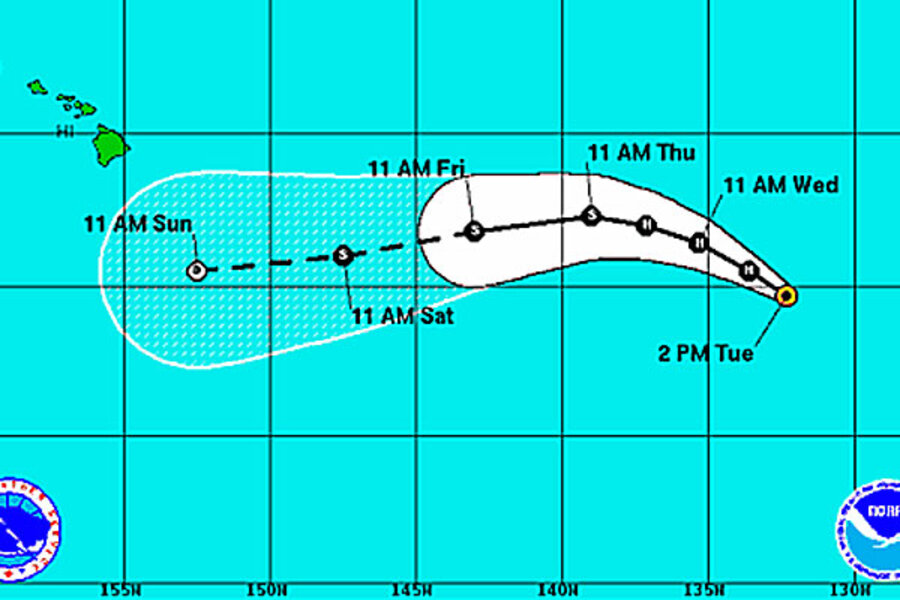Tropical storm Henriette reaches hurricane strength
Loading...
| Miami
Updated 4:45 pm EDT
Tropical storm Henriette became hurricane Henriette early Tuesday in the Pacific far from land. Meanwhile, farther west, Gil has become a tropical storm.
Hurricane Henreitte's maximum sustained winds Tuesday afternoon are now reaching 90 mph (120 kph) with additional strengthening possible, according to the National Hurricane Center.
The computer models show Henriette growing stronger over the next 12-24 hours, with sustained winds reaching 100 miles per hour. But the hurricane is forecast to weaken to the point of becoming a tropical storm two or three days from now. While there's some disagreement in the models over the track of the storm, the current National Hurricane Center five-day forecast shows Henriette moving southeast of Hawaii by Sunday.
The hurricane is centered about 1545 miles (2485 kilometers) east-southeast of the Hawaiian islands and is moving west-northwest near 10 mph (17 kph). Hurricane-force winds extend outward up to 25 miles from the eye of the storm. .And tropical-storm-force winds extend outward up to 80 miles from the center.
Also in the Pacific, Tropical Storm Gil's maximum sustained winds are near 40 mph (65 kph). The U.S. National Hurricane Center says gradual strengthening is forecast during the next two days. Gil is centered about 1,245 miles (2,000 kilometers) east-southeast of Honolulu and is moving west near 9 mph (15 kph).
Last week, Hawaii was hit by tropical storm Flossie which caused flash flooding and power outages in Oahu and Maui.
It would be extremely unusual for hurricane Henriette or tropical storm Gil to track similarly to Flossie and target the Hawaiian islands later next week, according to AccuWeather.com.
"As discussed during Flossie's existence, just one tropical storm or hurricane reaching Hawaii in a year is a rare feat in itself. The last such time before Flossie was Hurricane Iniki in 1992,
Only once since 1950 have two named storms, with tropical storm or hurricane strength, passed within 75 miles of Hawaii. Gilma and Iwa from 1982 make up that rare occurrence."
Copyright 2013 The Associated Press.





